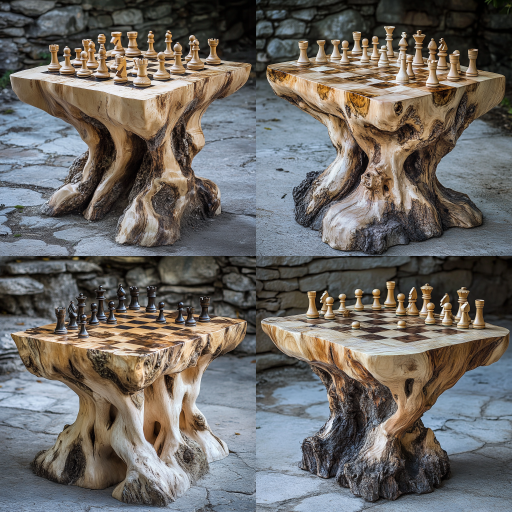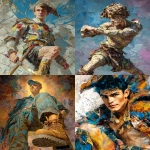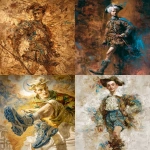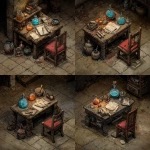Explore the Best AI Image Gallery

The Future of AI-Generated Images: Creativity, Ethics, and Beyond
The landscape of creativity has undergone a significant transformation with the advent of artificial intelligence and its application in image generation. Tools powered by AI are not just assisting artists; they are reshaping the ways in which visual content is created, perceived, and utilized across industries. In this blog post, we will explore the many facets of AI image creation tools, their potential uses, ethical considerations, and future trends.
The Rise of AI Image Creation Tools
AI image creation tools, such as DALL-E, Midjourney, and Stable Diffusion, have democratized the world of visual art and design. They allow both professionals and amateurs to produce high-quality visual content with minimal effort. Here are some notable benefits these tools provide:
- Accessibility: Many AI tools are user-friendly and do not require advanced technical skills, making them accessible to a wider audience.
- Efficiency: AI can generate images in minutes, significantly reducing the time required for manual creation.
- Inspiration: These tools can serve as a source of inspiration for creators by providing them with fresh ideas and novel concepts.
- Customization: Users can tailor their requests to suit specific needs, leading to a highly personalized output.
Impact on the Creative Industry
The influence of AI-generated images on the creative industry is substantial. In fields like advertising, film, gaming, and fashion, AI tools are being integrated into daily workflows. Here are a few examples of how AI image generation is making waves:
- Advertising and Marketing: Brands are using AI to produce eye-catching visuals for campaigns that resonate with their audiences, utilizing data-driven insights to enhance engagement.
- Film and Animation: AI has the potential to create visual effects and character designs, allowing filmmakers to experiment with concepts that would otherwise be too costly or time-consuming.
- Fashion Design: Designers can quickly generate clothing patterns and styles, pushing the boundaries of creativity and fashion innovation.
- Gaming: Game developers use AI to create immersive environments and characters, adding depth to gameplay while optimizing development timelines.
Ethical Considerations
While the benefits of AI-generated images are promising, ethical considerations loom large. Critical discussions are emerging about the implications of AI in creativity:
- Copyright and Ownership: As AI tools generate images based on existing datasets, questions arise regarding the intellectual property rights of both creators and the original sources of the materials.
- Bias and Representation: AI systems can reflect societal biases present in their training data, leading to the perpetuation of stereotypes or the exclusion of certain groups in visual representations.
- Impact on Employment: As AI tools become more prevalent, there's concern over job displacement in creative fields, with roles traditionally held by artists and designers potentially diminishing.
- Misinformation: AI-generated images can be manipulated to produce misleading content, raising alarms about authenticity and integrity in visual media.
Future Trends
Looking ahead, the evolution of AI image creation tools is expected to continue at an accelerated pace. Here are some emerging trends to watch for:
- Enhanced Collaborations: AI will increasingly become a partner to artists rather than a replacement, fostering new collaborative projects that blend human creativity and machine learning.
- Augmented Reality and Virtual Reality: With advancements in AR and VR, expect AI to play a pivotal role in creating interactive and immersive experiences that engage users on a deeper level.
- Ethical Frameworks: Greater emphasis will be placed on establishing ethical guidelines and best practices surrounding the use of AI in creative industries.
- Personalized Content: AI will pave the way for hyper-personalized visual content, enabling brands to tailor imagery to individual customer preferences and behaviors.
Conclusion
The journey of AI-generated images is just beginning, and their potential to revolutionize the creative landscape is immense. From enhancing artistic expression to raising ethical questions, AI tools are reshaping our visual world. As we embrace this technology, it is vital that creators, technologists, and policymakers come together to navigate the challenges and harness the benefits of AI in creativity.



](https://images.ai-img.art/thumbnails/150/3a60737a5b67fa252207ad1ae6db245a26284f53fb5846996bb34515b39ff269.webp)




](https://images.ai-img.art/thumbnails/150/1614d64dd7156c95db952258978be809eb3db8cea4453fec69c49cbdfe63fa94.webp)



](https://images.ai-img.art/thumbnails/150/8c3bd422d50d35735d8fb33bd314a79e30e5b150129d5d09bdad822a2007593f.webp)